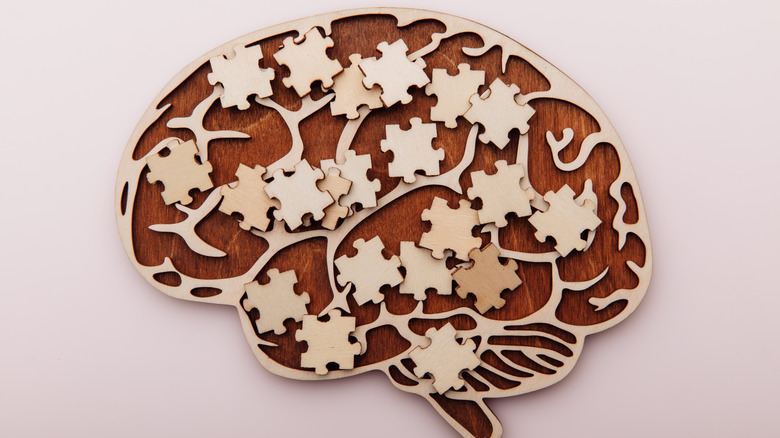Why Lewy Body Dementia Is Hard To Diagnose
Dementia encompasses a group of diseases marked by symptoms of cognitive impairment, often accompanied by mood and behavioral issues (per Dementia Society). Some of the most common hallmarks of dementia are memory loss, hallucinations, and agitation. Lewy body dementia is hard to diagnose, and until recently, Lewy body was commonly misdiagnosed as Alzheimer's or Parkinson's disease.
According to the Centers for Disease Control and Prevention (CDC), Alzheimer's is the most common type of dementia, with nearly 6 million people in the U.S. living with the condition in 2020. By contrast, according to the National Institute on Aging (NIA), around 1 million people have Lewy body dementia.
WebMD says Alzheimer's disease is typically diagnosed at age 65 or older, but early-onset Alzheimer's may begin as early as the 30s. Lewy body dementia often starts at 50 years of age or older, per the NIA.
Because Lewy body dementia and Alzheimer's show similar traits, Lewy body may be misdiagnosed as Alzheimer's (per NIA). But according to a 2019 study in The Lancet Neurology, Lewy body dementia also shares many symptoms with Parkinson's disease.
Currently, the NIA says no test can diagnose Lewy body with certainty during life, and different types of dementia share many commonalities, which is part of why Lewy body dementia is hard to diagnose. So how is Lewy body dementia diagnosed?
Signs and symptoms of Lewy body dementia
The National Institute of Neurological Disorders and Stroke (NINDS) differentiates Lewy body dementia by the presence of Lewy bodies in the brain. Lewy bodies occur when alpha-synuclein proteins clump together. In healthy brains, these proteins help with brain cell communication. But with Lewy body dementia, they bind together inside nerve cells, disrupting cell function. Unfortunately, current brain scans cannot detect Lewy bodies in living brains, so diagnosis cannot be conclusive from scans alone.
One symptom that differentiates Lewy body from other dementias is parkinsonism, or movement problems (via NIA). Another unique symptom is REM sleep behavior disorder, also common in Parkinson's (per Michigan Health). But a 2018 study published in the Journal of Alzheimer's Disease concluded that REM sleep behavior disorder seems less common in Alzheimer's.
The NIA says other core symptoms of Lewy body dementia include visual hallucinations, cognitive fluctuation, and general dementia. Supportive clinical signs include falls or fainting, constipation or incontinence, difficulties with blood pressure regulation, and changes in mood and personality. However, many of these secondary symptoms are also consistent with Alzheimer's and other dementias, making a Lewy body-specific diagnosis more difficult.
As researchers identify more biomarkers and symptoms for Lewy body that set it apart from other dementias, diagnosis should become more accessible and accurate. Until then, the Lewy Body Dementia Association provides a checklist of symptoms that can help with diagnosis.


